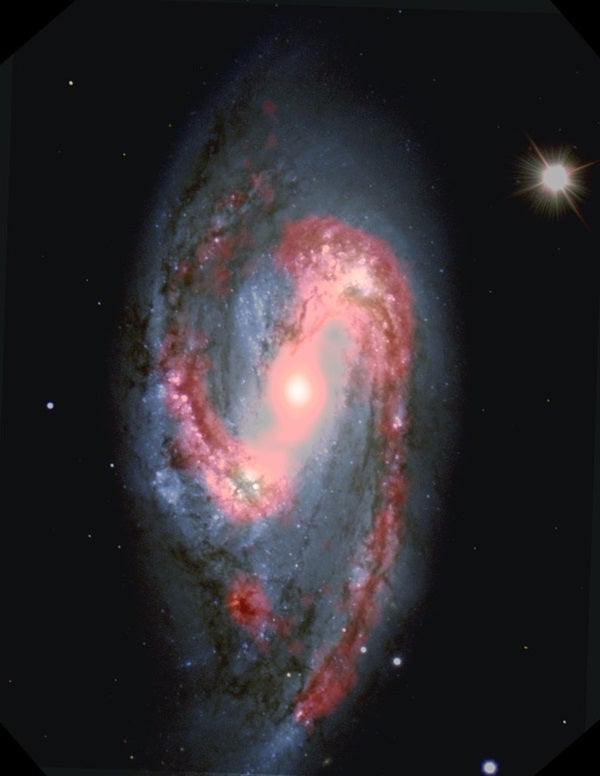Hubble has snapped a spectacular view of the largest “player” in the Leo Triplet, a galaxy with an unusual anatomy — it displays asymmetric spiral arms and an apparently displaced core. The peculiar anatomy is most likely caused by the gravitational pull of the other two members of the trio.
The unusual spiral galaxy, M66, is located at a distance of about 35 million light-years in the constellation Leo. Together with M65 and NGC 3628, M66 is one-third of the Leo Triplet, a trio of interacting spiral galaxies, and part of the larger M66 group. M66 wins out in size over its fellow triplets — it is about 100,000 light-years across.
M66 is the proud owner of exclusive asymmetric spiral arms that seem to climb above the galaxy’s main disc and an apparently displaced nucleus. This asymmetry is unusual; most often, dense waves of gas, dust, and newly born stars wind about the galaxy’s center in a symmetric way. Astronomers believe M66’s once orderly shape has most likely been distorted by the gravitational pull of its two neighbors.
Hubble has imaged M66’s striking dust lanes and bright star clusters along the spiral arms in fine detail with the Advanced Camera for Surveys. Star clusters are key tools for astronomers because they are used as indicators of how the parent galaxies assembled over time.
M66 boasts a remarkable record of supernova explosions. The spiral galaxy has hosted three supernovae since 1989, the latest one occurring in 2009. A supernova is a stellar explosion that may momentarily outshine its entire host galaxy, and it then fades away over a period lasting several weeks or months. During its very short life, the supernova radiates as much energy as the Sun would over a period of about 10 billion years.










